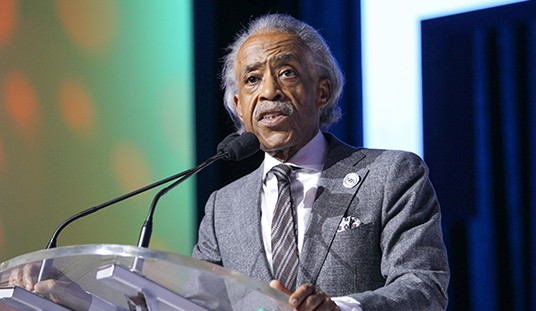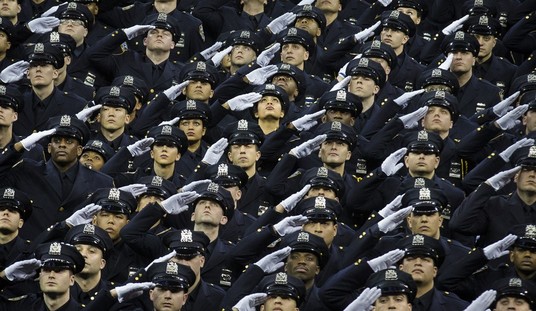
We take shopping malls for granted, although they’re actually a relatively new phenomenon, all things considered. The first indoor shopping mall in America opened in 1956 and is — not surprisingly — located in Minneapolis, which seems during wintertime to be located above the arctic circle. James Lileks has a section of his sprawling Website devoted to its history.
But malls change and adapt to current trends, or risk dying (and for shopping mall necrophiliacs, Dead Mall.com is your Website). Around 20 years ago, Starbucks and other retailers began to implement the idea of the Third Place, a term which was coined by sociologist Ray Oldenburg in the late 1980s, and explored by Virginia Postrel in her 1998 book, The Future and its Enemies:
Or consider the proliferation of coffee houses in the 1990s. Until recently, many U.S. social critics made much of the lack of “third places,” neither home nor work, where people could hang out and chat. Unlike Europeans, they complained, Americans have no café culture; shopping malls, suburbia, and commerce in general, they charged, have destroyed the democratic conversation of bars and social clubs.25 Such criticism was overstated, ignoring the many informal interactions that occur in such places as malls, restaurants, and doughnut shops. But the “third place” critique did identify a real source of discontent—as Starbucks discovered when its stores took off in ways the company never expected.
The original idea, writes CEO Howard Schultz, “was to provide a quick, stand-up, to-go service in downtown office locations.” Instead, the fastest-growing Starbucks stores turned out to be those near where people lived—the ones that functioned as neighborhood watering holes. The young adults who had grown up hanging out in shopping malls were looking for safe, friendly places to be with other people, places where, in Schultz’s words, “No one is carded and no one is drunk.” In focus groups, Los Angeles customers said they went to Starbucks because the place felt social. The company adjusted its strategy accordingly, building more and larger neighborhood stores, with more tables to sit around. It now deliberately seeks to foster a social, European-style café environment.
But what happens if you build a whole mixed-use development, a combination of stores, restaurants, professional offices and apartments around that notion of “a social, European-style café environment”? You get San Jose’s Santana Row development, which opened slowly in November 2002 and has since expanded into a sprawling project, despite California, and America’s, current sluggish (dare I say European-style) economy.
As I wrote on my blog back in early 2005, my wife and I stumbled onto our own local European-style development rather by surprise:
There’s a sort of mixed use shopping center/condominium complex that opened in San Jose a couple of years ago called Santana Row. (No relation, best as we can tell, to the psychedelic guitarist.) It’s located opposite a conventional indoor shopping mall that’s existed for decades. Whenever we’ve driven past its new opposite number, all we’ve seen are a few megastores, such as an enormous Best Buy and a surprisingly large Crate & Barrel. One night in 2003, we drove over there–I think to check out the Crate & Barrel, or maybe just to explore. After parking the car in the requisite multistory concrete garage, we emerged…in the Village.
[Enough with the Village stuff, OK??-Ed]
I dubbed it that when I first saw it, because its developers chose to house its group of smaller high-end boutique stores and restaurants in a sort of pretend 19th century-ish Parisian block, with condominiums on top of them (and a high-tech network underneath. But for better or worse, no signs of evil weather balloons patrolling the perimeter). Leaving the sprawling suburban section of San Jose that it’s located on and entering this alternate universe for the first time really does feel like you’re Patrick McGoohan being knocked out in London and waking up in the who-knows-where-in-the-world Village.
The photo above gives a sense of the Santana Row’s McGoohan-esque feel. Its the facade of a small stone chapel imported from France, and serves as Santana Row’s “Vintage Wine Bar.”
The former chapel serving as a wine bar is located adjacent to the Left Bank restaurant, which offers both casual outdoor and indoor dining serving sort of Americanized French cuisine:

As I noted back then, “If Santana Row all sounds a bit disorienting, I have a feeling it’s intentional:”
I know part of the reason why Las Vegas has become a sort of Disneyland for adults is that by putting tourists in a universe that doesn’t exist locally, it’s easier for people to lose their inhibitions and gamble, drink, and let their money flow more freely. I wonder if that last element was part of the thinking behind the development of Santana Row–and if it is, will we being seeing more theme-style shopping malls?
In 2008, Financial Times offered a characteristically slightly snooty take on the development, which helps flesh out some of its backstory:
“The industrial age was marked by the construction of single-family homes [but] the hallmark of the new spatial fix will be denser use of land and increased compactness,” says Richard Florida, professor of business and creativity at the Rotman School of Management at the University of Toronto, Canada, whose latest book, Who’s Your City?, focuses on the “where to live” question. “The demand for central locations is motivated by people’s desire to conserve time – by eliminating commuting, for instance.”
But, perhaps not surprisingly, it is in the consumerist US where the retail-residential concept is really taking off. Developers are bringing it not just to cities but to towns and suburbs, manufacturing entirely new, upmarket communities around pre-packaged, open-air malls. Call it instant yet sanitised urbanism – with a focus on shopping.
Santana Row, five miles from the nearest city, San José, is an ideal case in point. Designed to resemble a large urban block with a main street running through the centre, it has 70 retailers, 20 restaurants, nine spas and salons and more than 1,000 residents on its 42-acre footprint. Having opened in 2002, it has become the go-to spot for young professionals looking for upmarket shopping, a vibrant restaurant scene, a buzzy nightlife and, crucially, a convenient place to live.
The location of the development is significant. San José is California’s third largest city and, as the capital of Silicon Valley with its concentration of high-tech industries and wealth, its inhabitants rank among those with the highest median incomes in the country. But it has long drawn unfavourable comparisons with San Francisco, 50 miles north, for its lack of animation. And, if anything, the vibrancy of Santana Row has exacerbated the situation, luring not only shoppers but also homebuyers with its promise of a new kind of community.
“I’m addicted to the convenience. Everything is at your fingertips,” says Casey De Carlo, a software company sales executive and former suburbanite who now lives in The Heights, a Santana Row apartment building flanking an open courtyard with a swimming pool. “I made more friends here in six months than in six years in the suburbs and I could write a book about what goes on around the hot tub,” he adds wryly.
To walk the streets of Santana Row is to confront a melange of architectural styles and cultural references. Jan Sweetman, a vice-president at developer Federal Realty, says designers were sent to France and Europe to source ideas before blueprints were drawn up. Several architects were contracted to work on different buildings to avoid a “Disneyland-type product.” There are fountains imported from Barcelona, grassy plazas, fragments of ironwork and distressed stucco from Tunisia and Italy and Gaudi-esque pillars encrusted with broken tiles. The façade of a 17th-century French chapel is affixed to the front of a wine bar.
Beyond the slight sense of disorientation, there are practical advantages to such a location, as Glenn Reynolds wrote in An Army of Davids:
The downside is that the traditional downtown has been replaced by corporate-controlled space. What’s wrong with that? Well, in the traditional downtown, things like the First Amendment’s guarantee of free speech apply. In malls, they generally don’t. (One of my former students has written an interesting law review article on this subject.) But that’s where the people are, meaning that First Amendment guarantees of the right to protest downtown are increasingly meaningless when nobody goes downtown. Indeed, here in Knoxville the antiwar protests, such as they were, were held on the sidewalk in front of West Town Mall when the protest organizers realized that a weekend protest downtown would be the proverbial tree falling unheard in the forest. Malls often have such offensive characteristics as omnipresent security cameras coupled with draconian bans on picture taking. It’s not like Singapore, exactly, but it’s not your old-fashioned downtown square either.
But there’s a lesson too. One reason why people go to malls instead of downtown is that they feel safe. Part of this is physical safety. Though that’s partly an illusion. Mall crime doesn’t get reported much—all those advertisers make it easy to persuade local media to keep it quiet—but there’s lots more of it than you’d think. Makes sense: criminals go where the money is, and a mugger would starve to death in most downtowns.
But more important than the desire for physical safety, I think, is the desire to go un-hassled by unpleasant people. Vagrants (relatively safe from prosecution in light of Supreme Court decisions), panhandlers, and accosters of pedestrians ranging from Bible-thumping street preachers to various political activists are free to express themselves in downtowns, thanks to the expansive First Amendment jurisprudence of the past half-century. But, except in a few states where the state constitution has been interpreted to treat malls as public space, they’re barred from these spaces. And, in a curious coincidence, that’s where people tend to go. (How do people really feel about this? I’ve observed that in the movie Airplane, the audience always cheers when the airport solicitors get beaten up.)
So what’s the lesson? Free speech absolutists (and I’m pretty much one myself) may tell people that being hassled by loud-mouths is part of democracy. And people may even agree—but they’ll still choose the mall over downtown if the hassle-factor gets very high. What that means, among other things, is that public-sector rules are always subject to private-sector competition. It also suggests that you can enact rules that promote free speech at the cost of people being hassled—but if you go too far, people will vote with their feet by choosing a controlled environment with fewer hassles.
And indeed, one reason why my wife and I typically choose Santana Row in San Jose over trendy Palo Alto to spend our leisure time, is that the feral homeless run rampant through that college town’s shopping district. While the occasional homeless person can and sometimes does get into Santana Row, security is available to escort them off the property.
 The site’s condominiums, located on the floors above ground level, offer airy and well-glazed residences for those seeking to live in this holographic faux-urban environment. And for the right tenant, it’s probably a great place to live. But on weekends, the PART-TAY! atmosphere of Santana Row’s clubs and singles bars can get rather raucous. Still, if you want an urban environment with a minimum of grit, but plenty of energy, this is your kind of place. However, for those who prefer to live nearby, Santana Row’s owners are contracting to build a series of condos and apartments adjacent, but not quite in the center of the action.
The site’s condominiums, located on the floors above ground level, offer airy and well-glazed residences for those seeking to live in this holographic faux-urban environment. And for the right tenant, it’s probably a great place to live. But on weekends, the PART-TAY! atmosphere of Santana Row’s clubs and singles bars can get rather raucous. Still, if you want an urban environment with a minimum of grit, but plenty of energy, this is your kind of place. However, for those who prefer to live nearby, Santana Row’s owners are contracting to build a series of condos and apartments adjacent, but not quite in the center of the action.
Unfortunately for Santana Row, the double-whipsaw of the post-Stimulus economy and California’s myriad structural economic woes have hampered it slightly. In the spring of 2011, a gorgeous two-story Borders Books at Santana Row closed when that chain declared bankruptcy, which some have blamed on the chain placing too much emphasis on the “Third Place” concept and reducing the focus on actually pushing the underlying merchandise. That particular Borders certainly had plenty of comfy chairs for browsers to linger — my wife and I bought a pair of them for our media room during their going out of business fire sale. Today, the large retail space it formerly occupied currently has its windows blacked out, awaiting another tenant, which seems rather slow to be forthcoming.
As one of Santana Row’s PR people admitted to me, it’s the site’s restaurants that are currently providing a fair chunk of its retail income. But at least the development has a financial cushion during these troubled economic times. Presuming the economy begins to stabilize after 2012 and Silicon Valley remains an attractive area for young professionals, Santana Row should continue to grow successfully. In the meantime, it’s a paradoxical experiment: the future of American retailing, with a deliberately fin de siècle European style. I’m not at all sure I’d want to live there, but it’s certainly fun to visit when I need to take a vacation from workaday Silicon Valley — without the hassle of TSA searches, passports, or graffiti.










Join the conversation as a VIP Member